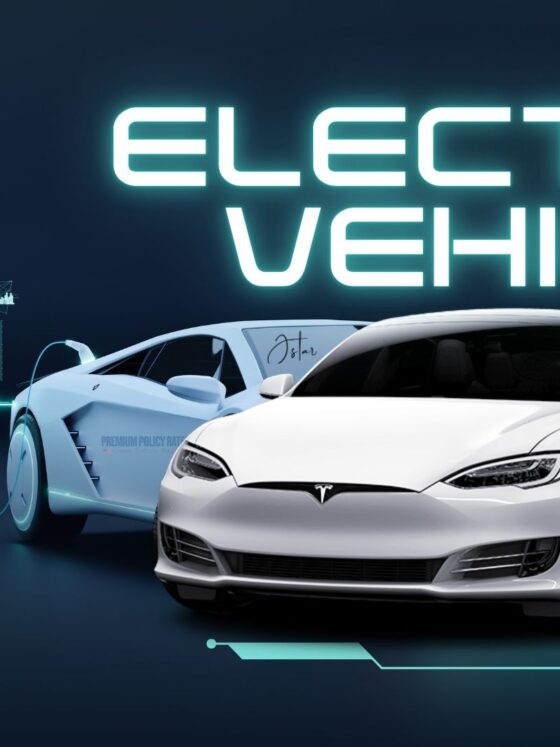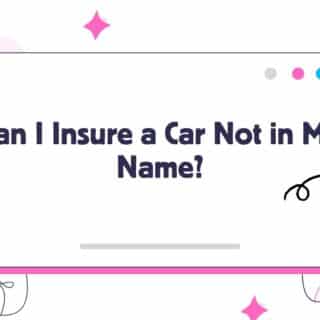Co-Signed Car Loan Insurance Explained – Complete 2026 Guide


Co-Signed Car Loan Insurance
If you’ve co-signed a car loan, you’ve likely asked: “Who pays the insurance on a co-signed car?” This is one of the most misunderstood aspects of co-signing, and the answer can have serious financial consequences.
Here’s the reality: When you co-sign a car loan, you’re not just helping someone get approved—you’re taking on 100% legal and financial responsibility for that vehicle if they default. That responsibility includes insurance.
Many co-signers assume the primary borrower will handle insurance. Many primary borrowers assume the co-signer will handle it. Then neither does it properly, and when an accident happens, both parties face devastating consequences: denied claims, legal liability, and financial ruin.
This comprehensive guide explains exactly how insurance works with co-signed car loan insurance, who is responsible for what, and how to protect yourself legally and financially.
What You’ll Learn:
Let’s break down everything you need to know to protect yourself.
1. Understanding Co-Signing: The Legal Reality
Before understanding insurance on a co-signed car, you must understand what co-signing actually means legally.
1.1 What is Co-Signing?
Co-signing means you’re taking on equal legal responsibility for a loan without receiving equal benefit.
The harsh legal reality:
- You’re 100% liable if primary borrower defaults
- Lender can pursue you for full amount
- Your credit is at risk
- Your payment history is affected
- You have no ownership stake (no authority to make decisions)
- You don’t receive the vehicle (primary borrower does)
Why lenders require co-signers:
- Primary borrower has insufficient credit
- Primary borrower has insufficient income
- Primary borrower has no credit history
- Primary borrower is high-risk (young, recent default, etc.)
The co-signer is basically saying:
“I guarantee this loan will be repaid. If the primary borrower fails to pay, I will pay 100% of the remaining balance, interest, fees, and penalties.”

1.2 Co-Signer vs. Co-Borrower
Important distinction (often confused):
| Aspect | Co-Signer | Co-Borrower |
|---|---|---|
| Liability | 100% if primary defaults | 100% (equal liability) |
| Ownership | None (no name on title) | Yes (name on title/deed) |
| Benefit | None (no vehicle access) | Yes (can use vehicle) |
| Authority | None (cannot make changes) | Yes (can make changes) |
| Insurance | Usually co-borrower’s responsibility | Can get own policy |
| Decision power | None legally | Equal power |
| Relationship to vehicle | Only financial responsibility | Both legal & financial |
For insurance purposes: Co-signers are financially responsible but often not the primary driver or title holder.
2. Insurance Requirements for Co-Signed Cars
2.1 Who Legally Must Obtain Insurance?
The short answer: The primary borrower (person whose name is on the loan).
The detailed answer: It’s more complicated.
Lender requirements:
- Most lenders require the primary borrower to obtain insurance
- Lender lists themselves as “lienholder”
- Insurance must be in place before vehicle leaves dealership
- Failure to obtain = loan violation = acceleration of entire loan balance
Legal responsibility:
- Primary borrower: Primary responsibility
- Co-signer: Secondary responsibility (if primary fails)
- Vehicle owner (if different): May have responsibility
Insurance company perspective:
- Whoever has “insurable interest” can get policy
- Primary borrower: Clear insurable interest (owns vehicle)
- Co-signer: Has insurable interest (financially liable)
- Either can get policy, but typically only one does
2.2 Timeline: When Must Insurance Be Obtained?
Critical timeline:
| Event | Timeline | Requirement |
|---|---|---|
| Loan approval | Day 0 | No insurance needed yet |
| Vehicle purchase | Day 1 | Insurance must be in place BEFORE leaving dealership |
| Taking vehicle home | Day 1 | Illegal to drive without insurance |
| Lender’s grace period | 0-7 days | Most lenders allow 3-7 days to show proof |
| Insurance required | Within 30 days | Lender requirement (varies by lender) |
| Failure to show proof | Day 31+ | Lender can force their own insurance (at your expense) |
CRITICAL: Do not drive the vehicle home without proof of insurance. This is illegal and violates most loans.
2.3 Mandatory Coverage Requirements
Lenders typically require:
| Coverage | Minimum | Recommended | Why Required |
|---|---|---|---|
| Liability | 25/50/25 | 100/300/100 | Protect lender from liability claims |
| Collision | $500-$1,000 deductible | $1,000 | Protect vehicle value |
| Comprehensive | $500-$1,000 deductible | $1,000 | Protect against theft/weather |
| Gap Insurance | Usually optional | Highly recommended | Covers “gap” if totaled |
| Uninsured Motorist | Varies by state | Required in most states | Protect against uninsured drivers |
Failure to maintain required coverage = loan default = serious consequences
3. Who Pays the Insurance Premium?
3.1 The Most Common Scenario
Typical situation:
- Primary borrower pays insurance premium
- Primary borrower is also the driver
- Co-signer provides financial support (but not for insurance)
- Lender has no involvement (after initial proof)
Who should pay:
- Legally: Primary borrower (their legal responsibility)
- Practically: Whoever uses the vehicle most
- Ethically: The person who benefits from having insurance
3.2 Scenario 1: Parent Co-Signed for Adult Child
Setup:
- Adult child financed car (in their name)
- Parent co-signed loan (due to insufficient credit)
- Child drives the vehicle daily
Insurance responsibility:
- Primary: Child should pay (they’re the driver/borrower)
- If child doesn’t pay: Parent becomes legally responsible
- Common arrangement: Parent pays, child reimburses
- Smart arrangement: Written agreement specifying who pays
Risk for co-signer:
- If child doesn’t pay insurance: Lender pursues parent
- Vehicle without insurance: Liability nightmare
- Best protection: Automatic payments set up in child’s account
3.3 Scenario 2: Spouse Co-Signed Loan
Setup:
- One spouse financed car (high income, good credit)
- Other spouse co-signed (though typically unnecessary)
- Both spouses share vehicle
Insurance responsibility:
- Primary: Financing spouse (primary borrower)
- Practical: Either spouse can pay (shared finances)
- Protection: Ensure primary borrower maintains payment
- Risk: If primary can’t pay, co-signer legally responsible
3.4 Scenario 3: Business Partner Co-Signed
Setup:
- Business partner financed business vehicle
- Co-partner co-signed
- Vehicle used for business purposes
Insurance responsibility:
- Primary: Business partner who financed (primary borrower)
- Business insurance: May be required instead of personal
- Protection: Written business agreement specifying who pays
- Risk: Business insurance vs. personal insurance distinction
3.5 Scenario 4: Lender Forces Insurance
When this happens:
- Primary borrower fails to provide proof within grace period
- Lender obtains “forced insurance” on vehicle
- Lender adds cost to monthly payment (usually 10-40% markup)
- Co-signer is legally responsible for this added cost
Cost implications:
- Normal insurance: $100/month
- Forced insurance (lender’s policy): $140/month (+40%)
- Cost added to loan payment
- Much more expensive than getting own policy
4. Insurance Policy Setup for Co-Signed Vehicles
4.1 Option 1: Primary Borrower Gets Own Policy (STANDARD)
How it works:
- Primary borrower (in their name) applies for insurance
- Lender listed as “lienholder”
- Vehicle registered in primary borrower’s name
- Co-signer is NOT on policy
Pros:
- ✅ Standard arrangement
- ✅ Primary borrower controls policy
- ✅ Straightforward setup
- ✅ Insurance company deals with registered owner
Cons:
- ❌ Co-signer has no say in coverage decisions
- ❌ Co-signer can’t request changes
- ❌ Co-signer unaware if payment lapses
- ❌ Co-signer discovers lapse only after problem
Best for:
- Trust relationship (parent-child, spouses)
- Primary borrower is reliable with payments
- Co-signer comfortable with arrangement
Co-signer protection:
- Get written agreement on who pays premium
- Request proof of insurance annually
- Verify automatic payments are active
- Consider verifying with insurer periodically
4.2 Option 2: Co-Signer Gets Own Policy
How it works:
- Co-signer applies for insurance (as co-signer/insurable interest)
- Provide lender paperwork showing co-signing responsibility
- Either: Lender listed as lienholder, OR primary borrower handles separately
- Creates dual coverage situation
Pros:
- ✅ Co-signer controls coverage
- ✅ Co-signer ensures payment
- ✅ Co-signer has full access to policy
- ✅ Co-signer can verify coverage directly
Cons:
- ❌ Potential duplicate coverage (overlapping)
- ❌ Coordination issues if both exist
- ❌ Increased premium cost (paying for 2 policies)
- ❌ Claims confusion (which policy pays?)
- ❌ Coordination issues with lender requirements
Best for:
- Skeptical co-signer
- Unreliable primary borrower
- Co-signer needs direct control
- Co-signer doesn’t trust primary borrower
Important note: This creates overlap. One policy should be primary, one secondary. Coordinate with insurance company.
4.3 Option 3: Co-Signer Covers Primary as Driver
How it works:
- Primary borrower gets own policy (in their name)
- Co-signer’s own vehicle policy lists primary as “permitted driver”
- Overlap but cheaper than separate policy
Pros:
- ✅ Some protection for co-signer
- ✅ Overlap coverage if primary’s policy lapses
- ✅ No additional premium usually
Cons:
- ❌ Limited coverage
- ❌ Only if co-signer has their own vehicle/policy
- ❌ Not ideal legal protection
Best for:
- Quick temporary solution
- Light usage of vehicle
- Backup protection layer
4.4 Option 4: Lender Requires Both to Be Named
Rare situation:
- Some lenders require both borrower and co-signer named
- Both on policy, lender as lienholder
- Single policy covers both
Pros:
- ✅ Clear responsibility
- ✅ Single policy eliminates confusion
- ✅ Both equally informed
Cons:
- ❌ Rare (most lenders don’t require this)
- ❌ Limited by some insurers
- ❌ More complex setup
Who should pay:
- Typically primary borrower (their legal obligation)
- If arranged: Written agreement specifies split
5. Coverage Options for Co-Signers
5.1 Standard Auto Insurance (Most Common)
What it covers:
- Liability (damage you cause to others)
- Collision (damage to vehicle)
- Comprehensive (theft, weather, vandalism)
- Uninsured motorist (hit by uninsured driver)
For co-signers:
- You’re legally liable for these
- Ensure primary borrower maintains coverage
- Request proof from insurer periodically
Cost: $1,200-$2,500/year typical
5.2 Umbrella/Excess Liability Insurance
What it is:
- Additional liability coverage above auto insurance limits
- Covers “gap” if claim exceeds auto policy limits
Example:
- Auto policy: $100,000 liability limit
- Accident: $250,000 in damages
- Gap: $150,000 (NOT covered)
- Umbrella policy: Covers the gap
For co-signers:
- Protects your personal assets if liable
- Often overlooked but critical
- Relatively cheap ($100-$300/year usually)
- Highly recommended for co-signers
Best for:
- High-risk co-signed situations
- Co-signer has significant assets
- Driver is young/inexperienced
- Vehicle is high-value
5.3 Personal Auto Insurance (If Co-Signer Drives Too)
What it is:
- Your own insurance if you also drive the co-signed vehicle
Best for:
- Co-signer uses vehicle occasionally
- Shared vehicle situation
- Parent-child, spouse situations
Cost: Additional $50-$150/month typically
5.4 Non-Owner Insurance (If Co-Signer Drives Only)
What it is:
- Liability coverage for borrowed vehicles
For co-signers:
- Limited use (only if co-signer drives sometimes)
- Provides backup liability coverage
- Usually cheaper than personal auto policy
Cost: $300-$600/year typical
When to use:
- Co-signer drives occasionally
- Wants own backup protection
- Can’t get primary borrower’s coverage details
6. Red Flags: Common Co-Signer Insurance Mistakes
❌ Mistake 1: Assuming Primary Borrower Will Handle Everything
The problem:
- “I co-signed, but I’m not responsible for insurance”
- “That’s their job, not mine”
- “I’m just the co-signer”
The reality:
- You ARE 100% responsible if primary borrower fails
- Lender will pursue YOU for unpaid premiums
- YOU lose if insurance lapses and accident happens
- YOU’RE liable for uninsured vehicle damages
The fix:
- Get written agreement on responsibility
- Verify insurance is active periodically
- Set up automatic payments from primary’s account
- Get proof of insurance directly from insurer
❌ Mistake 2: Not Understanding “Lienholder” Role
The problem:
- “What does it mean lender is lienholder?”
- “Why is that relevant to insurance?”
The reality:
- Lienholder has claim on vehicle if you damage it
- Lender can force their own insurance
- Lender can force claim payment to go to them
- Affects all parties
The fix:
- Ask lender to explain their role
- Ensure lender is listed on insurance policy
- Understand lender has claim priority
❌ Mistake 3: Not Verifying Insurance Is Maintained
The problem:
- “I got insurance once, that’s good”
- Never verifying payment continues
- Not checking if coverage lapses
The reality:
- Payment lapses (bounced check, account issue)
- Insurance gets canceled without notice to you
- Accident happens with NO coverage
- Both parties liable for full damages
The fix:
- Monthly verification: Call insurer to confirm active
- Automatic payments: Set up recurring from primary account
- Annual proof: Request new proof annually
- Early warning: Request cancellation notice if payment fails
❌ Mistake 4: Assuming Co-Signer Isn’t Legally Liable for Insurance Violations
The problem:
- “I didn’t get the insurance, so I’m not liable”
- “I’m just the co-signer”
- “Primary borrower is responsible, not me”
The reality:
- Lender sees you as equally liable
- Lender can sue you for insurance premium violations
- Lender can accelerate entire loan (charge full balance immediately)
- Your credit is damaged
The fix:
- Understand your complete legal liability
- Get everything in writing (who pays what)
- Treat it seriously—you ARE liable
❌ Mistake 5: Not Reading the Loan Agreement
The problem:
- “I just signed without reading”
- “I didn’t understand the insurance clause”
The reality:
- Loan agreement specifies insurance requirements
- Likely lists co-signer responsibility explicitly
- May specify who must pay
- Legally binding whether you read it or not
The fix:
- Read entire loan agreement BEFORE signing
- Ask lender to explain insurance section
- Get copy of final agreement
- Understand every requirement
❌ Mistake 6: Not Getting Written Agreement Between Parties
The problem:
- “We agreed verbally that he’d pay”
- “She said she’d handle the insurance”
- “We had a handshake deal”
The reality:
- Verbal agreements are hard to enforce
- Memory differs between parties
- No proof of what was agreed
- Disputes arise when payment is missed
The fix:
- Create written agreement specifying:
- Who pays insurance premium
- Payment method (automatic, check, etc.)
- Frequency (monthly, annual)
- What happens if primary defaults
- Who verifies payment
- Consequences if coverage lapses
❌ Mistake 7: Not Having Backup Plan
The problem:
- “What if primary borrower stops paying?”
- “I have no backup plan”
The reality:
- Primary borrower may lose job, get sick, refuse to pay
- You suddenly responsible for full premium
- You must decide quickly what to do
- Scrambling for payment damages credit
The fix:
- Plan for contingency
- Know what you’d do if primary defaults
- Consider “forced insurance” cost
- Budget for potential full premium payment
7. Detailed Scenarios: Real-World Situations
Scenario A: Parent Co-Signed for Teen Child
Situation:
- 17-year-old gets first car
- Parent’s credit only qualified for loan
- Parent co-signed (child is primary borrower)
- Child drives daily
- Parent not a driver on policy
Insurance setup:
- Child gets insurance in their name
- Lender listed as lienholder
- Child adds as driver
- Insurance required: Collision, comprehensive, liability
- Typical cost: $2,200-$3,500/year (high-risk teen driver)
Who pays:
- Child should pay (they’re the driver, primary borrower)
- Parent provides money to child for payment
- Or parent can offer to pay to ensure compliance
- Best practice: Automatic payment set up
Parent’s protection:
- Verify insurance active monthly (call insurer)
- Request proof annually
- Maintain good communication with child
- If child misses payment: Parent must immediately pay to prevent lapse
- Consider umbrella insurance ($150-$300/year) for extra protection
Red flags:
- Child refuses to get insurance
- Insurance premium paid but coverage still lapses
- Child receives cancellation notice
- Insurance company tries to contact parent (sign of non-payment)
If parent has to take over:
- Parent can get own policy (as co-signer with insurable interest)
- Costs more but ensures coverage continues
- Can add child as driver on parent’s policy instead
Scenario B: Adult Child Co-Signed, Financed Own Loan
Situation:
- Adult child (age 25) financed car in their name
- Child has insufficient credit
- Parent co-signed
- Child drives daily
- Parent doesn’t use vehicle
Insurance setup:
- Child gets insurance (primary borrower, driver)
- Lender listed as lienholder
- Child is main driver
- Cost: $1,500-$2,300/year (better than teen)
Who pays:
- Child should pay (primary borrower, driver, benefits most)
- Parent’s role: Ensure payment continues
- Verify: Request proof from insurer annually
- Warning: If child can’t pay, parent liable
Parent’s protection:
- Get written agreement: Child responsible for insurance
- Verify through insurer: Annual proof request
- Automatic payment: Set up recurring payment from child’s account
- Umbrella: Consider $150-$200/year extra coverage
- Exit strategy: Know when parent can be removed as co-signer
If payment issues arise:
- Contact child immediately: “I’m seeing lapse notice”
- Escalate if necessary: Pay premium yourself to avoid gap
- Have difficult conversation: “I’m co-signer, so I’m responsible”
- Consider: Can you exit co-signing arrangement?
Scenario C: Spouse Co-Signed (Usually Unnecessary)
Situation:
- Married couple
- Both have good credit
- Co-signing is mostly about being listed on vehicle
- Both might use vehicle
Insurance setup:
- Either spouse can get policy (usually primary income earner)
- Lender listed as lienholder
- Both spouses listed as drivers (usually)
- Cost: $1,200-$2,000/year
Who pays:
- Usually primary income earner (spouse who financed)
- But both have legal access to account
- Should be automatic (joint account often)
- Assumption: Spouse continues payment
Couple’s protection:
- Automatic payment setup (less likely to miss)
- Both aware of coverage details
- Both can access policy information
- If primary can’t pay: Spouse covers automatically
If separation/divorce occurs:
- More complex (legal/financial implications)
- Affects insurance responsibility
- May need separate policies
- Get legal advice immediately
Scenario D: Employer Co-Signed for Employee
Situation:
- Employee needed vehicle for job
- Employer co-signed loan
- Employee is primary borrower/driver
- Vehicle used primarily for work
Insurance setup:
- Employee gets insurance (primary borrower)
- May require “commercial use” disclosure
- Employer listed as lienholder (usually)
- Business vs. personal insurance distinction important
- Cost: $1,800-$2,500/year (higher due to business use)
Who pays:
- Employee should pay (primary borrower)
- Or employer reimburses as benefit
- If employee pays: Employer has no involvement in payment
- If employer pays: Payment comes from employer account
Employer’s protection:
- Verify employee maintains insurance
- Get proof of insurance
- Ensure commercial use is disclosed (affects coverage)
- Coordinate with business insurance policy
- Consider: When does co-signing obligation end?
Legal/tax issues:
- If employer pays: May be taxable benefit to employee
- If employer is reimbursed: May be business deduction
- Tax advice recommended
8. How to Protect Yourself as Co-Signer
8.1 Before You Co-Sign
Step 1: Understand Complete Liability
- Read full loan agreement
- Ask lender to explain co-signer responsibility
- Understand insurance requirements
- Know all financial obligations
- Get written copy of requirements
Step 2: Verify Primary Borrower’s Responsibility
- Discuss insurance payment before signing
- Confirm primary borrower will obtain insurance
- Discuss who pays premium
- Understand their financial situation
- Assess reliability
Step 3: Create Written Agreement
CO-SIGNED VEHICLE INSURANCE AGREEMENT
This agreement specifies insurance responsibility for [Vehicle Description]
Financed by: [Primary Borrower Name]
Co-signed by: [Co-Signer Name]
Loan amount: [Amount]
Lender: [Lender Name]
INSURANCE RESPONSIBILITY:
- Primary Borrower is responsible for obtaining auto insurance
- Coverage required: Liability (100/300/100), Collision ($1,000 deductible),
Comprehensive ($1,000 deductible)
- Insurance must be maintained for duration of loan
- Premium payment responsibility: [Primary Borrower]
PAYMENT METHOD:
- Automatic payment from [Primary Borrower's] account on [date]
- Contact: [Insurance Company] at [phone] to verify payment
CO-SIGNER VERIFICATION:
- Co-Signer will verify payment status [monthly/quarterly/annually]
- If payment lapses: Co-Signer will immediately notify Primary Borrower
- If primary cannot pay: Co-Signer has right to pay premium to prevent gap
DEFAULT PLAN:
- If primary borrower fails to pay: Co-Signer will pay within [timeframe]
- Cost reimbursement: Primary Borrower agrees to reimburse within [timeframe]
- If primary cannot reimburse: Co-Signer absorbs cost
VEHICLE CONDITION:
- Primary borrower maintains vehicle in safe condition
- Primary borrower reports any damage immediately
- Insurance inspections/adjustments handled by: [Primary Borrower]
Both parties agree to this arrangement:
Primary Borrower: _________________ Date: _______
Co-Signer: _________________ Date: _______
Witness: _________________ Date: _______
Step 4: Get Proof of Agreement
- Get copy for yourself
- Provide copy to lender (they may require it)
- Share with insurance company (they may want it)
- Keep in safe place for future reference
8.2 After You Co-Sign
Monthly (First Year):
- Verify automatic payment went through
- Spot-check balance with lender
- Quick confirmation: Insurance active
Quarterly:
- Request proof of insurance from primary borrower
- Verify online (many insurers have web portals)
- Contact insurance company: Confirm coverage active
Annually:
- Request official proof of insurance
- Verify coverage hasn’t changed
- Confirm lienholder information correct
- Assess financial situation of primary borrower
If Payment is Missed:
- Contact primary borrower immediately
- Ask what happened (emergency? forgot? financial problem?)
- Pay premium yourself if necessary
- Don’t delay—even one day gap creates risk
8.3 Exit Strategy: How to Stop Being Co-Signer
When can you exit?
- Loan is paid off (end co-signing obligation)
- Primary borrower refinances (removes you from new loan)
- Vehicle is sold/trade-in (loan ended, you’re released)
- Refinance: Primary borrower can refinance to remove you (if their credit improved)
How to refinance:
- Primary borrower applies for new loan without you
- New lender pays off original loan
- You’re released from co-signing
- Only works if primary borrower now qualifies alone
Timeline:
- If well-maintained: 1-2 years primary can refinance
- If payment problems: May take longer
- Communication: Discuss with primary borrower
9. What Happens If Insurance Lapses?
9.1 Immediate Consequences (Driving)
If primary borrower drives without insurance:
- ❌ Illegal (all states require insurance)
- ❌ Ticket issued: $500-$2,500 fine typical
- ❌ License suspension (varies by state)
- ❌ Vehicle impounded (possible)
- ❌ Criminal record (misdemeanor in some states)
If accident occurs without insurance:
- ❌ Full liability falls on driver + co-signer
- ❌ No insurance coverage for damages
- ❌ Other party can sue for full amount
- ❌ Can result in garnished wages, asset seizure
Personal liability exposure:
- No cap on liability (potential $100,000+ judgment)
- Your personal assets at risk
- Bankruptcy possible in severe cases
9.2 Lender Consequences
Lender’s reaction to lapsed insurance:
- ❌ Loan violation (breach of agreement)
- ❌ Forced insurance obtained at lender’s cost
- ❌ Cost added to monthly payment (+10-40% premium)
- ❌ Potential loan acceleration (entire balance due immediately)
- ❌ Default proceedings initiated
Lender’s forced insurance:
- Often expensive (lenders don’t shop for deals)
- Minimum coverage only (no extras)
- Worse protection than own policy
- You (as co-signer) are liable for cost
9.3 Insurance Consequences
After lapse:
- ❌ Coverage gap period (no protection)
- ❌ Future insurance harder to get (show history of lapse)
- ❌ Higher rates offered (lapse = high-risk marker)
- ❌ May be uninsurable by some companies
- ❌ “CLUE report” (Comprehensive Loss Underwriting Exchange) shows lapse for 7 years
10. FAQ: Co-Signed Car Loan Insurance Questions Answered
Q1: Who is legally responsible for getting insurance on a co-signed car?
A: The primary borrower (person whose name is on loan) is legally required to obtain insurance. However, if they fail to do so, the co-signer becomes responsible. The lender can pursue either party for non-compliance.
In practice: The primary borrower should obtain insurance. As co-signer, you should verify they do and be prepared to pay if they don’t.
Q2: Can the co-signer be removed from the loan?
A: Yes, but only under specific circumstances:
Refinancing:
Primary borrower refinances loan without you
New lender pays off original loan
You’re automatically released
Requirements: Primary must qualify alone (improved credit score usually)
Paying off the loan:
Vehicle paid in full
Co-signing obligation ends automatically
Time-based release (rare):
Some lenders allow removal after 3-5 years of perfect payment
Ask your lender if this option exists
Very few lenders offer this
Loan modification:
Rarely possible (lender usually refuses)
Would require primary borrower to qualify alone
Best option: Refinancing (most realistic path to exit)
Q3: Do I have to be on the insurance if I co-signed the loan?
A: No, you do not have to be on the policy directly. Typically:
Primary borrower is on policy (as policy holder)
You’re not listed on policy
You’re still legally liable (as co-signer of loan)
However, you CAN get your own policy:
As a co-signer, you have “insurable interest”
You can apply for own policy (as co-signer)
Creates redundant coverage (not typical)
Only recommended if you don’t trust primary borrower
Q4: What if the primary borrower stops paying insurance?
A: You have several options:
Immediate (prevent gap):
Pay the premium yourself immediately
Get proof of payment from insurer
Document your payment
Short-term (address situation):
Contact primary borrower: “Why did payment stop?”
Ask if financial emergency or just forgot
Offer to help problem-solve
Medium-term (if continues):
Set up automatic payment from your account
Reimburse yourself from primary borrower’s account
Have difficult conversation about responsibility
Create written payment agreement
Long-term (if unresolvable):
Consider legal action to collect reimbursement
Explore co-signer removal/refinancing
Get legal advice
Consider your exit strategy
Q5: What happens if there’s an accident and insurance was lapsed?
A: Multiple serious consequences:
For driver:
❌ Ticket for driving without insurance
❌ License suspension
❌ Possible jail time (varies by state)
For all parties:
❌ No insurance coverage (no protection)
❌ Other party can sue directly
❌ Full liability fallson you
❌ Potential $100,000+ judgment
For co-signer:
❌ You’re liable for full damages
❌ Your assets can be seized
❌ Wages can be garnished
❌ Bankruptcy possible
Prevention is critical: Verify insurance monthly.
Q6: Can I get insurance on a co-signed car if my name isn’t on the title?
A: Yes, you have “insurable interest” as co-signer because you’re financially liable.
How to do it:
Contact insurance company
Explain: “I co-signed the loan”
Provide: Loan document proving co-signing
Answer: All standard questions
Get policy in your name
Note: Creates dual coverage (one policy primary, one secondary)
Why you might do this:
Don’t trust primary borrower to maintain
Want direct access to policy
Want to ensure coverage continues
Need backup protection
Q7: Is gap insurance important for co-signed cars?
A: Yes, especially important for co-signers.
What gap insurance covers:
If car is totaled: You owe more than it’s worth
Example: Owe $30,000, car worth $20,000, gap = $10,000
Gap insurance covers the difference
For co-signers:
You’re liable for full loan amount
If car is totaled: You’re still liable
Gap insurance protects you from this scenario
Cost: Usually $500-$700 one-time
Should you get it?
✅ YES if: You’re worried about total loss scenario
✅ YES if: Vehicle depreciates quickly
✅ YES if: You have assets to protect
✅ YES if: You’re nervous about primary borrower
Q8: Can the primary borrower insure the car without telling me?
A: Legally yes, but practically problematic for you.
What can happen:
Primary gets policy, never tells you
You assume no insurance
Payment lapses (you don’t know)
Accident happens (you’re unaware)
You’re liable without knowing
Why this is bad:
You can’t verify coverage
You can’t prevent lapses
You’re liable without information
How to protect yourself:
Contact lender: “As co-signer, can I receive copies of insurance renewals?”
Contact insurer: “As co-signer, can I receive proof of insurance?”
Some will provide; some won’t
Regular verification by phone/email
Q9: What happens to insurance if the primary borrower dies?
A: Complicated and depends on circumstances:
If primary dies with active loan:
Loan doesn’t disappear (estate still owes)
Insurance obligation continues
Primary borrower’s family takes over (usually)
Or estate handles payment
As co-signer:
You can be pursued for full loan amount
Your liability doesn’t end
You may need to pay premium yourself
Legal issues (estate, inheritance) involved
Protection:
Get legal/financial advice immediately
Review loan agreement (may have death clause)
Contact lender: Understand your obligations
This scenario requires professional help
11. Legal Documents You Should Have
11.1 Must-Have Documents
1. Loan Agreement
- Specifies co-signer responsibility
- Lists insurance requirements
- Original signed copy
- Keep in safe place
2. Insurance Policy
- Proof of current coverage
- Lists lender as lienholder
- Coverage details
- Get annual renewals
3. Co-Signing Responsibility Agreement
- Written between you and primary borrower
- Specifies who pays insurance
- Outlines verification process
- Signatures from both parties
4. Verification Letters
- Annual proof of insurance
- Lender contact information
- Payment status confirmations
- Keep for 7+ years
11.2 Recommended Documents
1. Payment History
- Record of all insurance premiums paid
- Dates, amounts, payment methods
- Proof of payment (receipts)
2. Communication Log
- Record of conversations with primary borrower
- Dates, topics, outcomes
- Any issues discussed
3. Contingency Plan
- Written plan: “If primary can’t pay, I will…”
- Backup payment method
- Emergency contacts
4. Legal Review Letter
- From attorney reviewing loan documents
- Confirming your understanding of liability
- Recommendations for protection
- Professional documentation
12. When to Get Professional Help
Get Legal Help If:
✅ You’re unsure about co-signing (BEFORE signing)
✅ Primary borrower defaults on payment
✅ Insurance lapses and accident occurs
✅ Lender pursues you for payment
✅ You want to exit co-signing arrangement
✅ Relationship with primary borrower deteriorates
✅ You’re receiving collection notices
✅ You’re being sued
Get Financial Help If:
✅ You’re unsure about affordability
✅ You can’t cover premium if primary defaults
✅ Multiple co-signing obligations
✅ Primary borrower facing financial hardship
✅ Bankruptcy is concern
✅ You need debt restructuring advice
Get Insurance Advice If:
✅ You’re unsure about coverage requirements
✅ You want to add your own policy
✅ You want to understand gap insurance
✅ You’re considering umbrella coverage
✅ You’re evaluating coverage options
Professional contacts:
- Attorney: Contract/liability specialist
- Financial advisor: Debt management
- Insurance agent: Coverage options
- CPA: Tax implications
13. Real Examples: How People Handled It
✅ Example 1: Well-Organized Parent Co-Signer
The situation:
Parent co-signed for adult child’s car loan. Child had job but insufficient credit.
What they did right:
- Before signing: Read entire loan agreement
- Created written agreement: “Child pays insurance, parent verifies”
- Set up verification: Monthly call to insurance company
- Automatic payment: Set up from child’s account
- Annual review: Check policy renewal
- Exit plan: Discussed refinancing after 3 years
Outcome:
- Child paid every month (never missed)
- Parent verified quarterly (peace of mind)
- After 3 years: Child refinanced alone
- Parent successfully exited co-signing
- No problems, no stress
Key success factors:
- Clear agreement from start
- Regular verification
- Open communication
- Realistic exit plan
✅ Example 2: Cautious Co-Signer with Umbrella Insurance
The situation:
Individual co-signed for friend’s car (unusual but happened). Had concerns about liability.
What they did right:
- Got written agreement (who pays insurance)
- Got copy of insurance policy
- Obtained $1M umbrella policy ($15/month)
- Quarterly verification of coverage
- Set aside emergency fund ($1,500) for premium payment
Outcome:
- Friend paid premiums consistently
- Umbrella policy never needed
- Quarterly checks gave peace of mind
- Co-signing ended when loan was paid off
- Total cost: ~$540 (4 years x $15/month umbrella)
Key success factors:
- Extra protection (umbrella policy)
- Regular verification
- Emergency fund backup
- Realistic expectations
❌ Example 3: Negligent Co-Signer (What NOT to Do)
The situation:
Parent co-signed for child. Assumed child would handle everything.
What they did wrong:
- Didn’t read loan agreement
- Never discussed insurance responsibility
- No verification of payment
- Assumed it was being handled
- No written agreement
What happened:
- Child forgot to pay insurance (month 4)
- Insurance lapsed without notice
- Child got into accident (month 5)
- No insurance coverage
- Damages: $18,000 (lender + other party)
- Parent suddenly liable for full amount
Consequences:
- Parent had to pay $18,000 in damages
- Plus legal fees
- Relationship with child strained
- Parent’s credit damaged
- Insurance surcharges for 5+ years
Lessons learned:
- Can’t assume responsibility is being handled
- Verification is NOT optional
- Written agreement is critical
- Regular monitoring prevents disasters
14. Final Checklist: Co-Signed Car Loan Insurance
Before Co-Signing:
- Read entire loan agreement
- Understand co-signer liability completely
- Ask lender to explain all requirements
- Verify insurance requirements in writing
- Discuss with primary borrower (who pays insurance?)
- Create written agreement
- Get lawyer to review (optional but recommended)
- Know your exit strategy
After Co-Signing (First 30 Days):
- Verify insurance obtained before vehicle taken home
- Get copy of insurance policy
- Confirm lender listed as lienholder
- Verify lender received proof of insurance
- Confirm coverage meets lender requirements
- Get all documents in safe place
First Year (Monthly):
- Verify automatic payment processed
- Quick call to insurer to confirm active
First Year (Quarterly):
- Request proof of insurance from primary borrower
- Contact insurer to confirm coverage active
- Review payment history
Annually:
- Request new proof of insurance
- Verify coverage hasn’t changed
- Confirm lienholder info correct
- Assess primary borrower’s financial health
- Update emergency contact list
If Issues Arise:
- Contact primary borrower immediately
- Ask what happened
- Pay premium if necessary
- Document all communications
- Don’t delay action
Ongoing:
- Maintain written records
- Keep all insurance documents
- Review loan agreement annually
- Plan exit strategy
- Prepare for eventual co-signing release
Editorial Disclosure:
PremiumPolicyRates.com may earn affiliate commissions from insurance providers featured in this article. Our analysis is based on:
- Actual loan and insurance agreements
- Financial industry standards
- Legal precedent for co-signing
- Real co-signer situations and outcomes
- Current insurance and lending practices
We do NOT accept payment for rankings. Our goal: Help co-signers understand liability and protect themselves.
Related Resources & Further Reading
Related Articles on PremiumPolicyRates:
- Can I Insure a Car Not in My Name?
- Non-Owner Car Insurance: Complete Guide
- Leasing vs Buying: Insurance Differences
- Young Driver Insurance: Adding Teen to Family Policy
- Best Car Insurance for First-Time Buyers
External Resources:
- Federal Trade Commission – Co-Signing – Consumer protection info
- National Association of Insurance Commissioners – Insurance regulations
- Consumer Financial Protection Bureau – Loan & finance info
- Experian – Credit and co-signing effects
- State Insurance Department – Your state’s regulations










